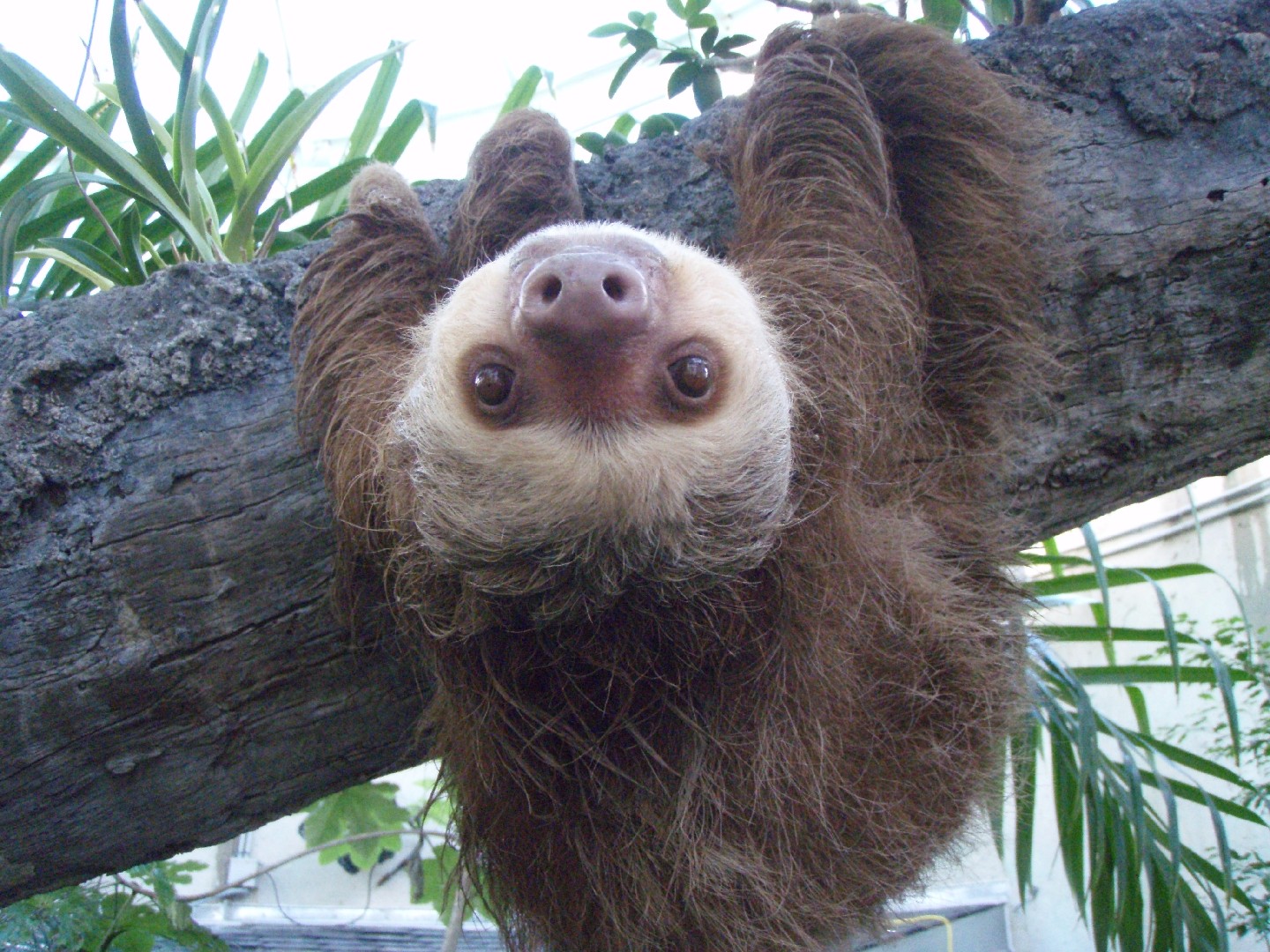Hoffmann's two-toed sloth
A species of Two-toed sloths Scientific name : Choloepus hoffmanni Genus : Two-toed sloths
Hoffmann's two-toed sloth, A species of Two-toed sloths
Scientific name: Choloepus hoffmanni
Genus: Two-toed sloths
Content
Description General Info
 Photo By Ontley , used under CC-BY-SA-3.0 /Cropped and compressed from original
Photo By Ontley , used under CC-BY-SA-3.0 /Cropped and compressed from original Description
Hoffmann's two-toed sloth is a heavily built animal with shaggy fur and slow, deliberate movements. The fore feet have only two toes, each ending with long, curved claws, although three clawed toes are on each of the hind feet. Other features that distinguish it from three-toed sloths, which may be found in the same geographic areas, include the longer snout, separate rather than partially fused toes of the forefeet, the absence of hair on the soles of the feet, and larger overall size. The wrist of the sloth has developed some specific traits due to their slow, yet acrobatic motions. These evolved traits include diminution and distal migration of the pisiform bone, with a loss of contact with the ulna; reduction of the distal end of the ulna to a styloid process; and extremely reduced contact between the ulna and triquetral bone. Hoffmann's two-toed sloth is, however, much easier to confuse with the related Linnaeus's two-toed sloth, which it closely resembles. The primary physical differences between the two species relate to subtle skeletal features; for example, Hoffmann's two-toed sloth has three foramina in the upper forward part of the interpterygoid space, rather than just two, and often – but not always – has fewer cervical vertebrae. Adults range from 54 to 72 cm (21 to 28 in) in head-body length, and weigh from 2.1 to 9 kg (4.6 to 19.8 lb). Although they do have stubby tails, just 1.5 to 3 cm (0.59 to 1.18 in) long, this is too short to be visible through the long fur. The claws are 5 to 6.5 cm (2.0 to 2.6 in) long. Females are larger on average than males, although with considerable overlap in size. Their fur is tan to light brown in colour, being lighter on the face, but usually has a greenish tinge because of the presence of algae living in the hairs. Its karyotype has 2n = 49–51 and FN = 61. 
General Info
Lifespan
12-20 years
Diet
The diet of hoffmann's two-toed sloth is herbivorous, primarily composed of leaves. However, its food consumption also includes fruits, flowers, and small twigs. It has a particular fondness for Cecropia leaves, constituting a substantial portion of its diet.
Appearance
Hoffmann's two-toed sloth is a medium-sized mammal with a slow, sloth-like body shape. Its thick, coarse fur is of a grayish-brown color that often hosts green algae for camouflage. The animal exhibits rounded heads, small ears, and strong, hook-like claws on their limbs, which aid in climbing trees. No significant visual differences exist between different ages, genders, or subspecies.
Behavior
Hoffmann's two-toed sloth is predominantly solitary, except during mating or when a mother cares for her young. This species demonstrates arboreal behavior by spending most of its life in trees, preferring a slow-moving, nocturnal lifestyle. For feeding, it relies heavily on leaves, fruits and small branches. Hoffmann's two-toed sloth lacks territorial behavior and often rotates between multiple feeding trees.
Population
Decreasing
Scientific Classification
Phylum
Chordates Class
Mammals Order
Anteaters and sloths Family
Sloths Genus
Two-toed sloths Species
Hoffmann's two-toed sloth